Refer to the exhibit.
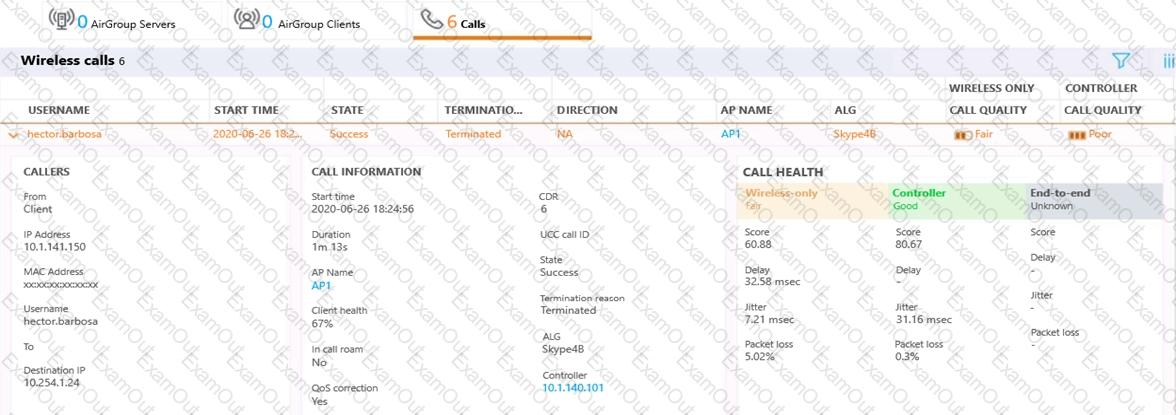
A network administrator has recently enabled WMM on the VAP’s SSID profile and enabled UCC Skype4B ALG at the Mobility Master level. During testing, some voice and video conference calls were made, and it was concluded that the call quality has dramatically improved. However, end to end information isn’t displayed in the call’s details. Also, Skype4B app-sharing’s performance is poor at times.
What must the administrator do next in order to enable end to end call visibility and QoS correction to app-sharing service?
An organization owns a fully functional multi-controller Aruba network with a Virtual Mobility Master (VMM) in VLAN20. They have asked a network consultant to deploy a redundant MM on a different server. The solution must offer the lowest convergence time and require no human interaction in case of failure.
The servers host other virtual machines and are connected to different switches that implement ACLs to protect them. The organization grants the network consultant access to the servers only, and appoints a network administrator to assist with the deployment.
What must the network administrator do so the network consultant can successfully deploy the solution? (Choose two.)
A company plans to build a resort that includes a hotel with 1610 rooms, a casino, and a convention center. The company is interested in a mobility solution that provides scalability and a service-based approach, where they can rent the WLAN infrastructure at the convention center to any customer (tenant) that hosts events at the resort.
The solution should provide:
• Seamless roaming when users move from the hotel to the casino or the convention center
• Simultaneous propagation of the resort and customer-owned SSIDs at the convention center
• Null management access upon resort network infrastructure to the customers (tenants)
• Configuration and monitor rights of rented SSIDs to the customers (tenants)
Which deployment meets the requirements?
Refer to the exhibit.

A network administrator completes the initial configuration dialog of the Mobility Controllers (MCs) and they join the Mobility Master (MM) for the first time. After the MM-MC association process, network administrator only creates AP groups, VAPs, and roles. Next, the network administrator proceeds with the configuration of the policies and creates the policy shown in the exhibit.
Which additional steps must be done to make sure this configuration takes effect over the contractor users?

A joint venture between two companies results in a fully functional WLAN Aruba solution. The network administrator uses the following script to integrate the WLAN solution with two radius servers, radius1 and radius2.
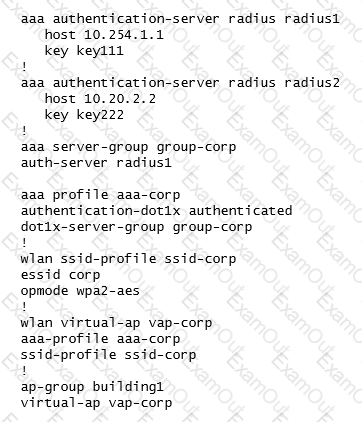
While all users authenticate with username@domainname.com type of credentials, radius1 has user accounts with the domain name portion.
Which additional configuration is required to authenticate corp1.com users with radius1 and corp2 users with radius2?
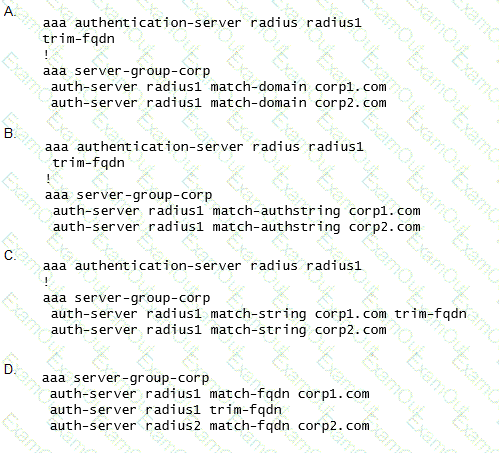
Refer to the exhibit.

A network administrator adds a Mobility Controller (MC) in the /mm level and notices that the device does not show up in the managed networks hierarchy. The network administrator accesses the CLI. executes the show switches command, and obtains the output shown in the exhibit.
What is the reason that the MC does not appear as a managed device in the hierarchy?
A network administrator is in charge of a Mobility Master (MM) – Mobility Controller (MC) based network security. Recently the Air Monitors detected a Rogue AP in the network and the administrator wants to enable “Tarpit” based wireless containment.
What profile must the administrator enable “tarpit” wireless containment on?
Refer to the exhibit.
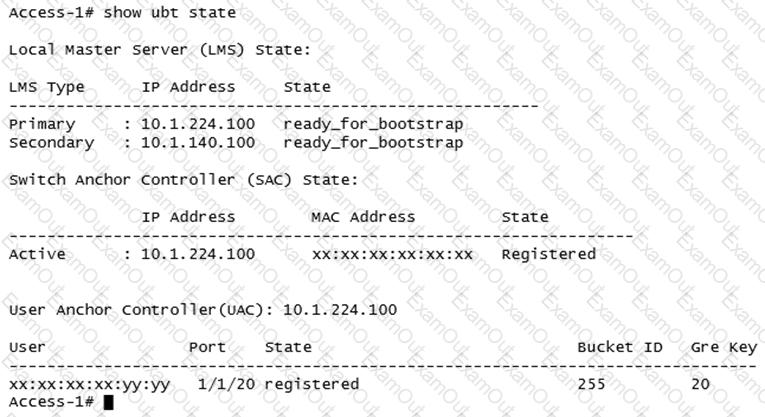
Based on the output shown in the exhibit, with which Aruba devices has Access-1 established tunnels?
A software development company has 764 employees who work from home. The company also has small offices located in different cities throughout the world. During working hours, they use RAPs to connect to a datacenter to upload software code as well as interact with databases.
In the past two month, cabling issues have occurred connection to the 7240XM Mobility Controller (MC) that runs ArubaOS 8 and terminates the RAPs. These RAPs disconnect, affecting the users connected to the RAPs. This also causes problems with code uploads and database synchronizations. Therefore, the company decides to add a second 7240XM controller for redundancy.
How should the network administrator deploy both controllers in order to provide the redundancy while preventing failover events from disconnecting users?
Refer to the exhibit.
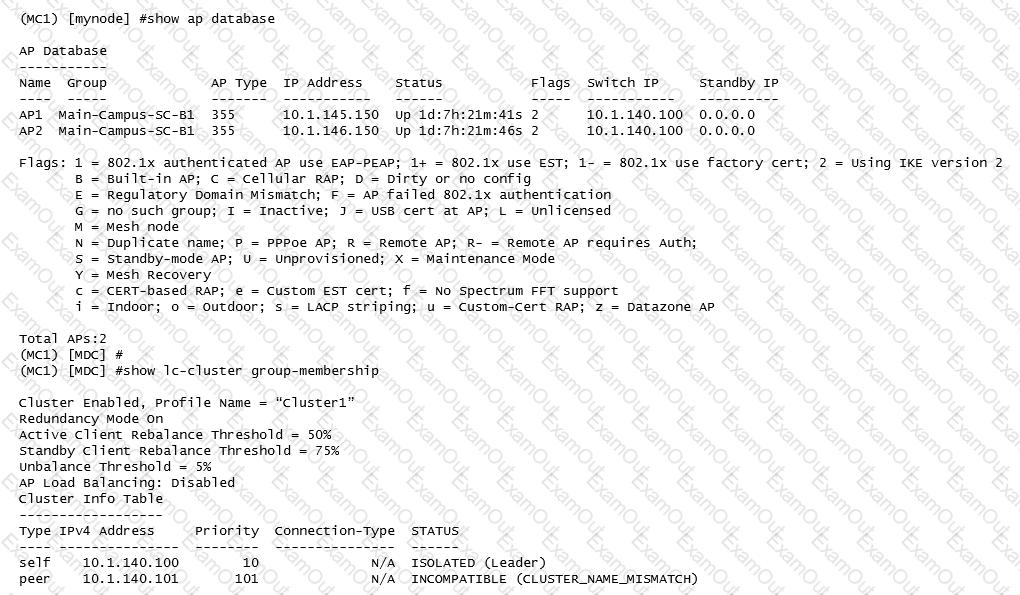
After deploying several cluster pairs, the network administrator notices that all APs assigned to Cluster1 communicate with MC1 instead of being distributed between members of the cluster. Also, no IP addresses are shown under the Standby IP column.
What should the network administrator do to fix this situation?

